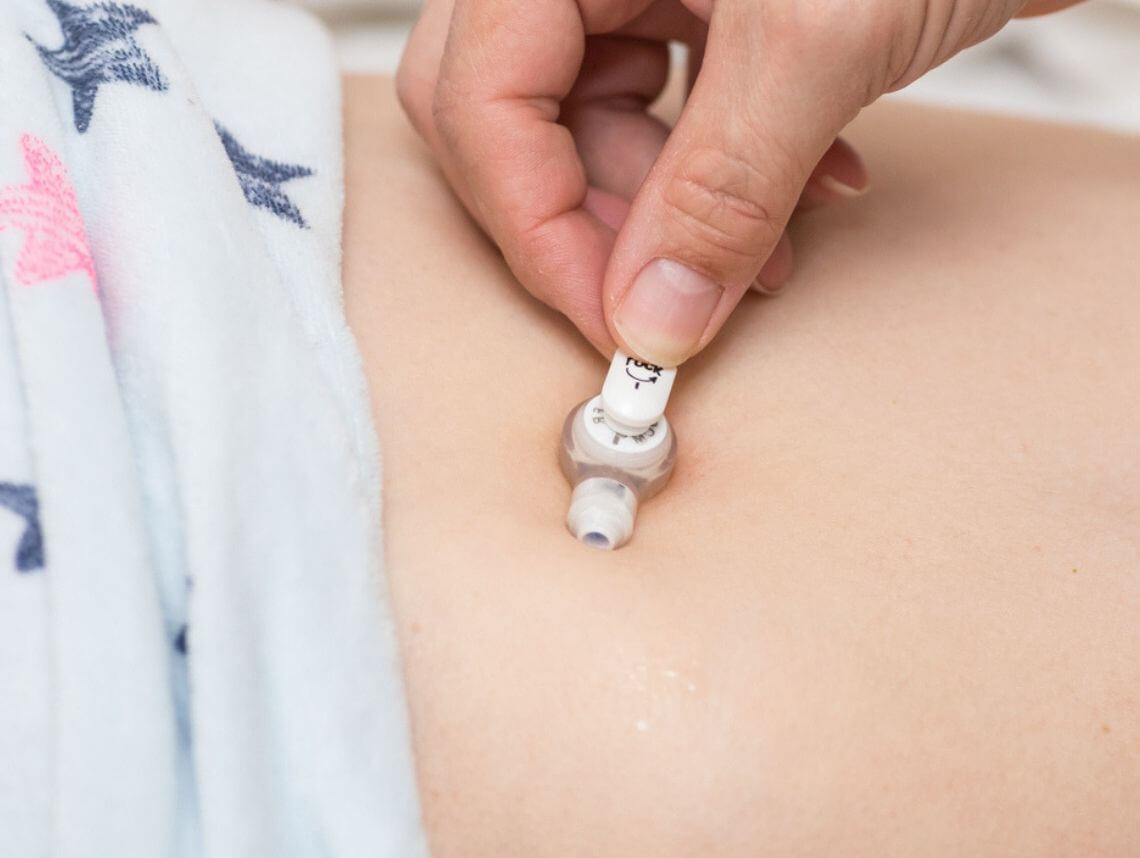It’s easy to take things for granted when someone is in perfect health. But for someone who must have a Jejunostomy tube (J-tube), even simple activities, such as swimming, walking, and playing may become challenging, if not impossible. However, all these activities can be accomplished with the right care.
What is a Jejunostomy tube?
Jejunostomy tube (J-tube) is a soft tube placed through the skin, into the small intestine and is used to deliver food and medicine until a person is healthy enough to eat by their mouth. While this tube can feel like a nuisance, it shouldn’t restrict you or your loved one from doing the things they love.
Jejunostomy (J-Tube) Procedure
While you or a loved one is asleep under general anesthesia, a surgeon surgically places the J-tube. This involves making an incision on the belly area and small intestine. The surgeon then places the tube into the openings and stitches the tube into place. These stitches will eventually come out on their own without surgical removal.
After surgery, a dressing is placed at the opening of the tube. This dressing is replaced by a Hollister attachment device after 48 hours. The device is meant to keep the tube in place and keep it positioned correctly so that the wounds can heal safely.
How to Clean and Dress a Jejunostomy Tube
To keep the skin around the J-tube clean and dry, you’ll need to change the bandages at least once a day if the area becomes wet or dirty. To prevent infections and replace dressings, follow these steps to keep your skin clean:
- Wash your hands with soap and water.
- Remove dressings or bandages on the skin. Put them in a plastic bag and throw them away.
- Check the skin for redness, odor, pus, swelling, or pain. Ensure the stitches are still in place.
- Use a clean towel or Q-tip to clean the skin around the J-tube one to three times a day – using mild soap and water. Attempt to remove any drainage or crusting on the skin and tube. Remember to be gentle, then dry the skin with a clean towel.
- If there is drainage, place a small piece of gauze under the disc around the tube.
- Replace dressings as shown by your nurse and tape it securely to the abdomen. Usually, this includes splitting gauze strips and slipping them over the tube – taping them down on all four sides. Also tape down the tube.
- Make sure you don’t rotate the tube, as this could cause a blockage. Stay away from using creams, powders, or sprays near the site unless otherwise approved by your nurse.
How to Flush the J-Tube
Flushing your j-tube is crucial to preventing blockage and other complications. Your nurse provides instructions on how to do this, but generally, the process includes using a syringe to slowly push warm water into the side opening of the J-port. You should flush the J-tube after each feeding and medicine.
If your tube becomes clogged, attach a five cc syringe with warm water to the end of the feeding tube adapter. Try flushing the tube. If you’re unable to flush, pull back on the syringe plunger and attempt to flush again. Do this up to five times, and if you still can’t flush the tube, try using warm water in a three cc syringe, repeating the previous steps. If you are still unable to flush the tube, contact your doctor or nurse immediately.
When to Call Your Doctor
As you monitor your or your loved one’s J-tube, it’s important to know when you should call your doctor or nurse. If you see a lot of leakage, skin irritation, or any of the following conditions, you should call your medical professionals immediately:
- A rash with red dots around the edges
- Increasing redness and swelling around the stoma
- An open area of skin around the stoma
- Bleeding at the stoma site
- Growing scar tissue (granulation tissue) around the stoma
- Increased leakage at the stoma site
- The tube becomes clogged and can’t be flushed
- The tube falls out
Contact Care Options for Kids for Jejunostomy Tube Care Services
Caring for someone with a J-tube can be difficult, especially if you have an active schedule that prevents you from taking the time to flush the tube or provide diligent care. That’s why our team of professionals at Care Options for Kids are here to help. Our home care services offer clinic-level support in the comfort of your home.
We refer loving and competent caregivers to provide customized care for families – from a few hours a day to around-the-clock supervision. Contact us directly to speak with a home health care professional or request a free in-home assessment. Together we can determine the best plan of action to keep your loved ones happy and healthy.
If you are considering pediatric home health care services, contact the caring staff at Care Options for Kids. Call today (888) 592-5855.






